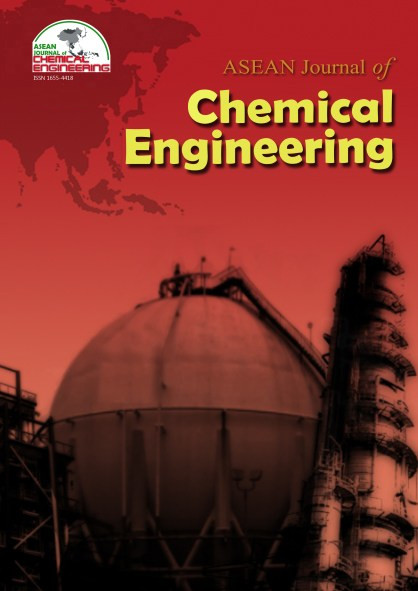Numerical Simulation of Air Flow and Temperature Distribution in Yarn Drying Room
Abstract
This research studied the recovery of wasted heat from exhaust air releasing from the compressor to increase the drying efficiency. The yarn drying room model was developed using Computational Fluid Dynamics (CFD) so as to study the distribution of air flow and temperature numerically. The most suitable design of the drying room considering the decrease of drying time such as the locations of hot air inlet and outlet were investigated. At the exhaust air outlet position, the average exhaust air temperature is 56°C, while the average flow rate and relative humidity are 1.75 m/s and 16.2 percent, respectively. The hydraulic calculation revealed that the appropriate duct size was 0.412 x 0.412 m2 width and height. The hot air temperature after transferring through air duct was decreased from 56°C to 52°C. The simulation results showed that the appropriate inlet position is at the ceiling and split into 4 inlet positions which had 0.152 x 0.152 m2 width and height. The most appropriate outlet position was 3 m above the ground in order to achieve the highest distribution of moisture content with standard deviation of 1.9 x 10-4. The locations which had the high accumulation of moisture were at the center and both sides of the drying room due to the low air turbulence. From this configuration, the drying time was decreased from 2 days to 89 minutes. Furthermore, after the 2 air circulators were installed in the drying room, the distribution of moisture content, represented in term of standard deviation, was about 1.5 x 10-4. As a consequence, the drying time could be reduced to 78 minutes, but the monthly electricity cost of air circulators was around 590 baht.
References
2. Pimsamarn, J., et al, 2008, Efficiency Improvement of Yarn Drying Process Using Wasted Heat from Air Compressor, Senior Project, Bachelor Degree of Chemical Engineering Department, King Mongkut’s University of Technology Thonburi, Thailand, pp. 1-65.
3. Wood drying [Online], Available: http // www.wikipedia.org/wiki/Wood_drying [May 8, 2009].
Copyright holder for articles is ASEAN Journal of Chemical Engineering. Articles published in ASEAN J. Chem. Eng. are distributed under a Creative Commons Attribution-NonCommercial 4.0 International (CC BY-NC 4.0) license.
Authors agree to transfer all copyright rights in and to the above work to the ASEAN Journal of Chemical Engineering Editorial Board so that the Editorial Board shall have the right to publish the work for non-profit use in any media or form. In return, authors retain: (1) all proprietary rights other than copyright; (2) re-use of all or part of the above paper in their other work; (3) right to reproduce or authorize others to reproduce the above paper for authors’ personal use or for company use if the source and the journal copyright notice is indicated, and if the reproduction is not made for the purpose of sale.



